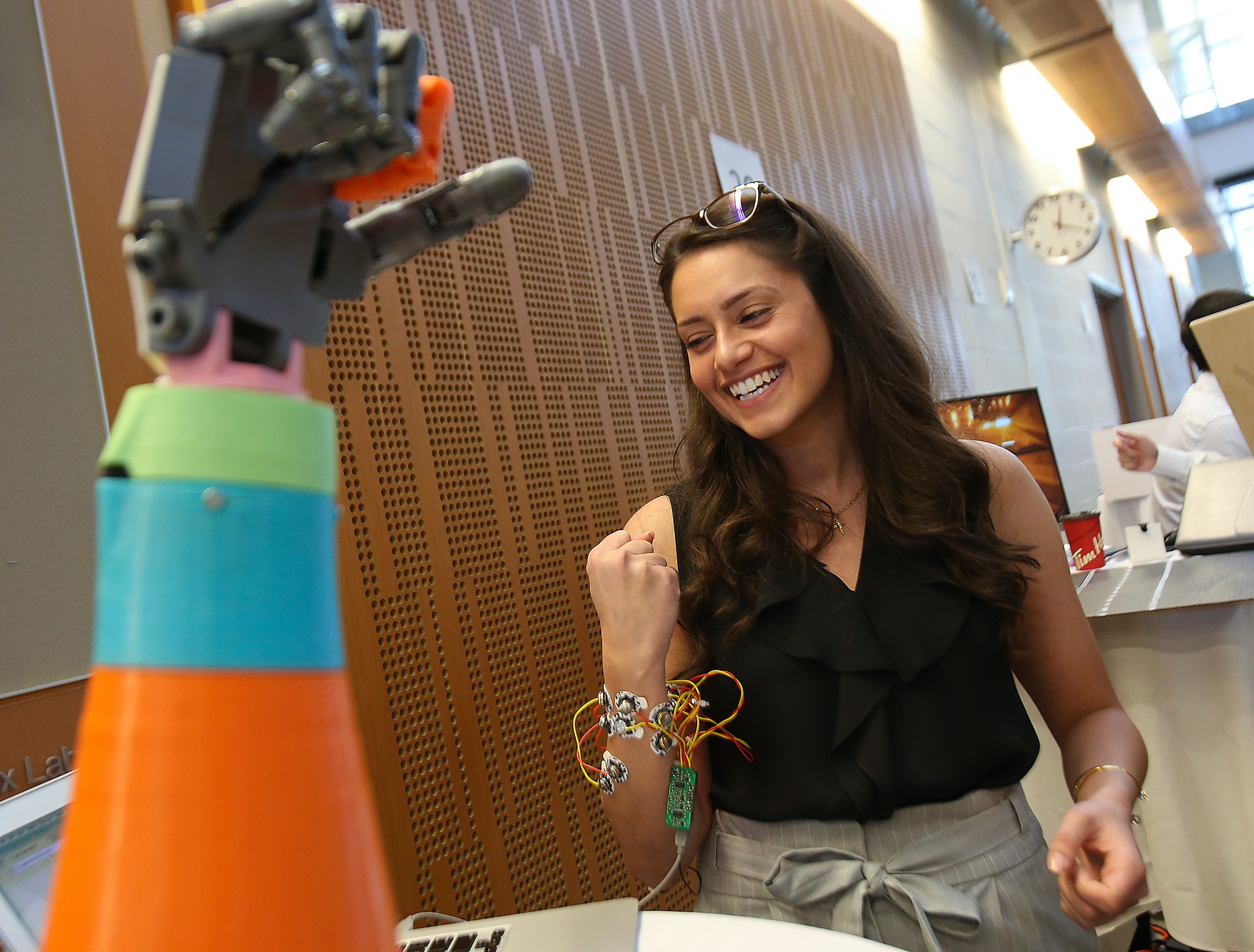
Studying engineering at the University of Windsor has shown Faraz Talebpour his potential to make a difference.
A doctoral candidate in electrical and computer engineering, his work on a remotely controlled underwater vehicle can find immediate application on real-world challenges. It was one of more than 30 research projects displayed during an open house Friday in the Centre for Engineering Innovation.
Talebpour says his experience scuba diving has helped him to appreciate how pollution threatens aquatic ecosystems.
“Going under the water you see how we’re destroying that world,” he says. “This project can save the marine life that we have endangered.”
— Published on Jan 5th, 2021

What if family doctors had access to low-cost, handheld scanners or biosensors that could detect cancer at an early stage? What if they could monitor a patient’s heart activity through a wearable device and detect early signs of cardiovascular disease? How about a sensor that could prevent intoxicated drivers from operating vehicles or a navigation system that could aid the visually impaired indoors?
Researchers at the University of Windsor hope to advance these technologies and more in Windsor’s first state-of-the-art microfabrication facility. The high-tech clean room will be specially designed to facilitate multidisciplinary micro- and nano-scale research by controlling air pollutant levels, pressurization, temperature and humidity. It’s slated to open in 2019 in the Ed Lumley Centre for Engineering Innovation.
“This fabrication facility will provide us with an ideal incubator for academia and industry to foster collaborative research and commercialization of advanced sensors, thus increasing our leadership in the emerging area of the micro nano sensor industry — an area which is rapidly growing,” says Dr. Jalal Ahamed, an assistant mechanical engineering professor who designs and fabricates micro- and nano-systems for a variety of applications, including healthcare, automotive, aerospace and manufacturing.
— Published on Jan 5th, 2021

The exciting part of working on a project redesigning the intersection of California Avenue and Wyandotte Street is the possibility of seeing it implemented, says Emma Teskey.
A fourth-year civil engineering student, she was part of a group that suggested several changes to the pavement and traffic signalling systems that would make the crossing safer for pedestrians and smoother for vehicles.
It was one of more than 60 projects displayed by graduating engineering students during Capstone Design Demonstration Day, Friday in the Centre for Engineering Innovation.
Teskey and her teammates — Abigayle Diemer, Kailee Dickson, Curtis Lanoue, and Sarah Zaarour — suggested altering the traffic signals so that cars and trucks are stopped in all directions while pedestrians cross, a system known as the “pedestrian scramble.” They also proposed adding wide white stripes to the crosswalk pavement and relocating a transit stop so buses do not block the intersection.
— Published on Jan 7th, 2021

There’s more to engineering than designing bridges and cars.
“We want to show people that engineers don’t just design things, they solve the problems of the world,” says Larysa Hyzka, a fourth-year civil engineering student at the University of Windsor.
Hyzka teamed with classmate Eleane Paguaga Amador to share this message with the public by creating and hosting I Look Like an Engineer, a community outreach event that ended up landing the pair provincial recognition.
Paguaga Amador and Hyzka invited Windsor-Essex community leaders and students to the Ed Lumley Centre for Engineering Innovation to discuss why they chose to pursue engineering and what the professions means to them.
“Story after story, we heard from speakers who believed their highest potential could be reached through engineering because it allowed them to make the lives of others easier,” says Paguaga Amador, a third-year industrial engineering student.
— Published on May 11th, 2018

Four of five UWindsor Engineering programs evaluated recently by Engineers Canada received the highest accreditation ratings available. This latest evaluation cycle, which took place in early July, was conducted through the Canadian Engineering Accreditation Board (CEAB), a national organization of provincial and territorial associations regulating the practice of engineering.
— Published on Jul 3rd, 2018





